
Wonder Boy in Monster Land, known by its original arcade release as Wonder Boy: Monster Land, is a platform video game developed by Westone Bit Entertainment and released by Sega in Japanese arcades in 1987 and for the Master System in 1988, with a number of other home computer and console ports following. The game is the sequel to the 1986 game Wonder Boy and takes place eleven years after the events in the previous game. After enjoying over a decade of peace on Wonder Land following the defeat of the evil King by Tom-Tom, later bestowed the title "Wonder Boy", a fire-breathing dragon called the MEKA dragon appeared; he and his minions conquered Wonder Land, turning it into "Monster Land". The people, helpless due to their lack of fighting skill, call for Wonder Boy, now a teenager, to destroy the monsters and defeat the MEKA dragon. Players control Wonder Boy through twelve linear levels as he makes his way through Monster Land to find and defeat the MEKA dragon. Players earn gold by defeating enemies and buy weapons, armor, footwear, magic, and other items to help along the way.

Paperboy is an arcade action game developed and published by Atari Games, and released in 1985. The player takes the role of a paperboy who delivers a fictional newspaper called The Daily Sun along a street on his bicycle. The arcade version of the game featured bike handlebars as the controller.

Mercenary is a 3D action-adventure game written for the Atari 8-bit family and published by Novagen Software in 1985. It was converted to the Commodore 64, ZX Spectrum, Amstrad CPC, Atari ST, Amiga and Commodore 16/116/Plus/4 platforms. The game uses vector graphics renderings of vast, sparse environments and has open-ended gameplay. It was also released as Mercenary: Escape from Targ and Mercenary: A Flight Simulator Adventure.
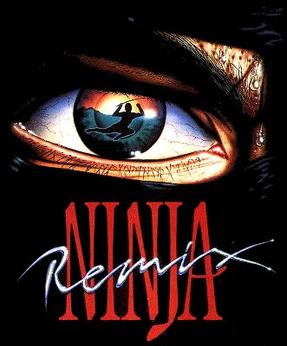
Last Ninja is a series of video games published by System 3. The first game in the series titled The Last Ninja, was released in 1987 for the Commodore 64 and was one of the most successful games for the system. In 1988, System 3 released Last Ninja 2, and in 1991 the third game in the series, Last Ninja 3. In 1990, Last Ninja Remix was released for 8-bit systems. This was Last Ninja 2 with new music, a new introductory sequence, slightly changed graphics and fixed bugs. Confusingly, the 16-bit versions of the original The Last Ninja game were also released in 1990 as Ninja Remix.

RoboCop 2 is a platform shooter video game based on the 1990 film of the same name. The game was released for several platforms, including Amiga, Amstrad GX4000, Atari ST, Commodore 64, Game Boy, Nintendo Entertainment System, and ZX Spectrum. Ocean Software developed and published several versions, and Data East manufactured an arcade version.

Cybernoid: The Fighting Machine is a shoot 'em up developed and published in 1988 by Hewson Consultants for the ZX Spectrum. It was ported to the Amstrad CPC, Atari ST, Commodore 64, Amiga, and Nintendo Entertainment System. It was programmed by Raffaele Cecco. The ZX Spectrum, Amstrad, and Atari ST versions have a main theme by Dave Rogers, while the Commodore C64 version has a different theme by Jeroen Tel.

Black Lamp is a platform game, originally published by Firebird Software for the Amiga, Atari ST, Commodore 64 and ZX Spectrum computers in 1988, and later published by Atari Corporation for the Atari 8-bit family in 1989.

Barbarian II: The Dungeon of Drax is a video game first published in 1988 for various home computers. It was released as Axe of Rage in North America. The game is the sequel to Barbarian: The Ultimate Warrior, which was published in 1987. In Barbarian II, the player controls a princess or barbarian character, exploring the game world to locate and defeat an evil wizard. The game's plot is an extension of its predecessor, although the gameplay is different. While the first game offers two players the opportunity for virtual head-to-head combat, the second is a single-player beat 'em up with fewer fighting moves. It uses a flip-screen style instead of scrolling.
Addictive Games was a UK video game publisher in the 1980s and early 1990s. It is best known for the Football Manager series of games created by company founder Kevin Toms. The company was originally based in Milton Keynes, England, and later relocated to Bournemouth, in southern England.
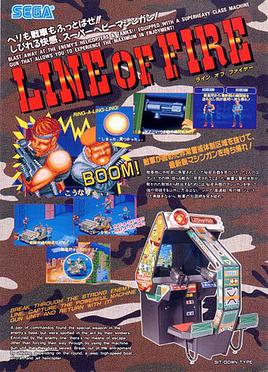
Line of Fire is a first-person light gun shooter game developed by Sega and released for arcades in 1989. It was released with two arcade cabinet versions, a standard upright and a sit-down cockpit, both featuring two positional guns. The cockpit design allows the player(s) to sit down while playing the game, while having two-handed machine guns, controlled by a potentiometer-controlled gun alignment software system. The game follows a two-man commando unit as they try to escape from a terrorist facility after seizing a prototype weapon.

The Real Ghostbusters is a 1987 shoot 'em up arcade game developed and published by Data East. It is loosely based on the animated series of the same name. In Japan, Data East released it as a non-Ghostbusters arcade game under the title Meikyuu Hunter G. In 1989, Activision published The Real Ghostbusters for Amiga, Amstrad CPC, Atari ST, Commodore 64, and ZX Spectrum.

The Flintstones is a 1988 video game based on the 1960s television series The Flintstones. The game was developed by Teque Software Development and published by Grandslam Entertainments. The game was released in Europe in 1988, for Amiga, Amstrad CPC, Atari ST, Commodore 64, MSX, and ZX Spectrum. A version for the Sega Master System was released in 1991.

P-47: The Phantom Fighter is a 1988 horizontally scrolling shooter arcade video game originally developed by NMK and published by Jaleco. Set during World War II, players control a Republic P-47 Thunderbolt fighter aircraft to face against the Nazis, who are occupying multiple countries around the world. Its gameplay involves destroying waves of enemies, picking up power-ups and new weapons, and destroying bosses. It ran on the Mega System 1 hardware.

Ghostbusters II is a 1989 action game based on the film of the same name. It was published by Activision for various computer platforms. British studio Foursfield developed a version for Commodore 64, Amiga, Atari ST, Amstrad CPC and ZX Spectrum, which also got ported to the MSX by New Frontier. It features three levels based on scenes from the film. Dynamix developed a separate version for the DOS, also based on the film. The non-DOS versions were praised for the graphics and audio, but criticized for long loading times, disk swapping, and the final level. The DOS, Commodore 64 and Amiga versions were the only versions released in North America.
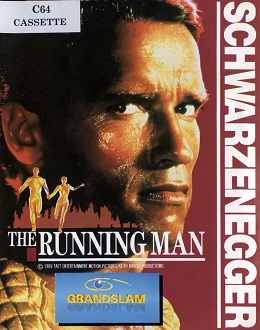
The Running Man is a 1989 beat 'em up video game based on the 1987 film of the same name. It was developed by Emerald Software and published by Grandslam Entertainments for Amiga, Amstrad CPC, Atari ST, Commodore 64, and ZX Spectrum.

Terminator 2: Judgment Day is a 1991 action video game developed by Dementia and published by Ocean Software. It is based on the 1991 film of the same name, and was released in Europe for Amiga, Amstrad CPC, Atari ST, Commodore 64, DOS, and ZX Spectrum. It is a sequel to The Terminator, itself based on the 1984 film of the same name. The game features several gameplay styles such as driving, fighting, and puzzle-solving.

Judge Dredd is a 1990 platform shoot 'em up video game based on the character of the same name. It was developed by Random Access and published by Virgin Mastertronic. It was released in Europe in 1990, for the Amiga, Atari ST, Commodore 64, and ZX Spectrum. Critics found the gameplay repetitive.
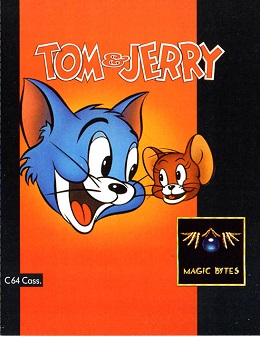
Tom & Jerry is a 1989 platform game developed and published by German company Magic Bytes. It is the first video game based on the cartoon of the same name, and was released in the United States and Europe, for Amiga, Atari ST, and Commodore 64 computers.

Red Heat is a beat 'em up video game based on the 1988 film of the same name. It was developed by British studio Special FX and published by Ocean Software. It was released in Europe in 1989, for Amiga, Amstrad CPC, Atari ST, Commodore 64 (C64), and ZX Spectrum.
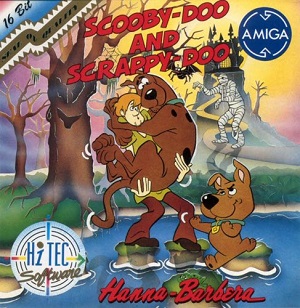
Scooby-Doo and Scrappy-Doo is a 1991 platform game developed by British studio PAL Developments and published by Hi-Tec. It is part of the Scooby-Doo franchise, and was released in Europe for Amiga, Amstrad CPC, Atari ST, Commodore 64, and ZX Spectrum. The game received praise for its graphics.



















